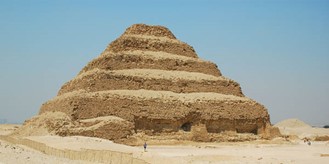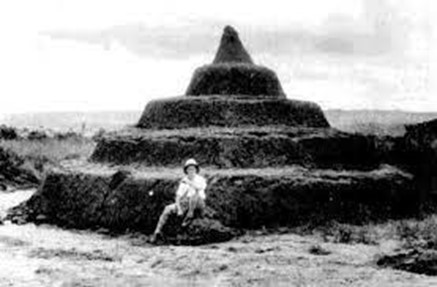Nsude Pyramids: The Pride of Ancient Igbos - by Ego Mbagwu
Nigeria is not ordinarily associated with pyramids. There were the groundnut pyramids in Kano, but the story usually ends there. Egypt is the country that is symbolized by its pyramids in most travel publications, like the Eiffel Tower defines France. Both structures contribute considerably to the national income of their respective countries.
Therefore, one must marvel at the Nsude pyramids in Nsude, Enugu state, on the Onitsha–Port Harcourt expressway just before 9th mile. On the left-hand side, from Onitsha to Enugu, the area where they used to be can be seen at the foot of a low hill, densely wooded and quite distinct from the surrounding grassland.
Wikipedia refers to the pyramids as ‘one of the unique structures of Igbo culture.’ It is described as having ‘a first base section that was 60 ft. in circumference and 3 ft. in height’ with additional circular areas on top of it, each area being smaller in circumference than the one before. These continued to the top, which was in the form of a cone. There were ten pyramids built of ‘hardened red mud and clay,’ which ‘were laid in groups of five parallel to each other.’
Nsude Pyramids
The pyramids were said to have been discovered first in 1891 by Luke Walter; in 1935, G.I Jones photographed them, presenting us with the iconic photos we now have of them. Those photographs show them to be like the step pyramids of Saqqara in Egypt, suggesting a possible connection between the early Igbo people and early Egyptians. Oral history states that they were either built to honour Ani, the earth goddess, or to honour Uto, a deified war hero. The area where the pyramids were is called Ugwu Uto.

The Step Pyramids of Saqqara
The pyramids have now all but disappeared due to neglect though some signs of them are still visible. Research on and reconstruction of the pyramids should be carried out. The Al-Qarawiyyin library in Fez, Morocco, for instance, was damaged by fire, and over the years, it became dilapidated and was closed to the public for centuries. The Moroccan Government reconstructed it, now famed as the oldest functioning library in the world, attracting hundreds of tourists to Fez. The Enugu State Government should emulate the Moroccans. The reconstruction of the pyramids will promote Igbo culture, connect us to past events, and provide a source of income for Nsude, Enugu State, and Nigeria through tourism. If our forefathers could build them centuries ago, we can undoubtedly produce replicas today.
The Nsude pyramids prove that early sub-Saharan Africans were dexterous. We should all take pride in that.
Will you go to Nsude to see the pyramids if they are reconstructed? Let us know by posting a comment.





